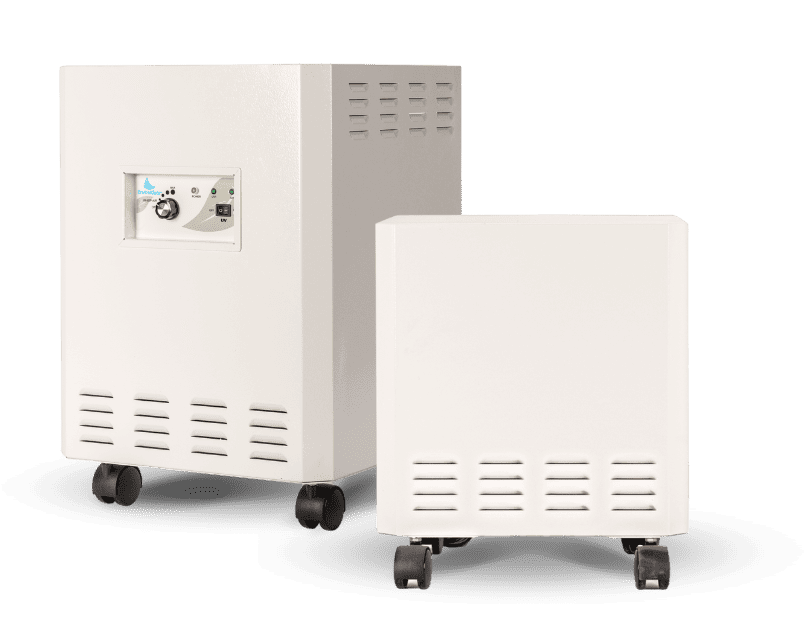Unfortunately, the air in your home or office can become compromised overtime by various airborne pollutants that can find their way into this space through products used in the environment, chemicals from building materials that are emitted into the air, and even from the people that are occupying this space. Recently, airborne pathogens have been an increasingly important concern within indoor air spaces, including those environments that we spend increasing levels of time in during the day, such as a home or workplace. These invisible airborne particles and microorganisms can easily be floating throughout the air and without making its present known, which can present various health risks to those individuals that have the potential to become exposed to these airborne pathogens.
Whether it be various bacteria, viruses, and other pathogens in the air that can be highly infectious and hazardous to human health, the mitigation process of ridding the indoor air space of these pollutants can include several key integral solutions. Among these key solutions to use for airborne mitigation of pathogens is the use of air filtration products such as air purifiers that contain hospital-grade HEPA filtration. HEPA filters are one superior option for removing particulate pollution from the air, including the hazardous microorganisms in the air such as bacteria, mold spores, and viruses – due to the filter’s strategic construction and filter media that allows for fine particulate matter to be captured in the filter media. Will these HEPA filters that are integrated into air purifiers work to remove viruses and other pathogens from the air or is there a better option available on the market for this pathogen mitigation?
In this article we are going to learn more about how HEPA filters work to filter microorganisms from the air, what types of microorganisms can be effectively trapped on these HEPA filters, and learn if the combination of HEPA filtration and UV lights be the best method for virus removal in an air purification device.
What is a HEPA Filter
If you are shopping for an air purifier, the chances are you have likely heard of a HEPA filter along your searching and research. HEPA, an acronym that stands for High Efficiency Particulate Air, is an important and popular form of air purification technology that is able to offer a highly effective technology for particulate removal. These contain regulated standards that must be met in order to comply with HEPA.
The High Efficiency Particulate Air standard was structured and implemented by the U.S. Department of Energy, as the first HEPA filtration was developed in the 1940s for use in facilities that contained nuclear materials. These filters were able to keep potentially radioactive particles contained, as the HEPA was able to shield and contain radiation including particles of dust and moisture that become irradiated. However, in recent years HEPA filtration has become a preferred filtration method for capturing and removing fine particulate matter from the air such as allergens (dust, dust mites, pet dander, etc.) and microorganisms (viruses, bacteria, mold spores, etc.) since the filter is able to filter particulate matter larger than 0.3 microns, when using a hospital-grade HEPA.
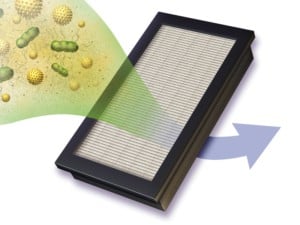
HEPA Filter Types & Materials
Typically, when we talk about HEPA filters, there are three main types that are used and frequently discussed which includes HEPA, True HEPA, and Medical Grade HEPA filter. Generic HEPA filters are capable of removing airborne pollutants ranging in size from 0.3 microns to 2 microns or larger at a 90-99% percent efficiency rating – which is relatively expansive when discussing pollutant size. These HEPA filters are constructed of a dense filter material that allows for a collection of pollutants to be captured and trapped in this medium thickness filter. In comparison, true HEPA filters are able to have a higher efficiency rating in capturing pollutants at a 99.97% efficiency while capturing as low as 0.3-micron size pollutants from the air. These true HEPA filters are constructed of high-density material that allows for numerous pollutants to become captured and trapped on the filter media.
Lastly, HEPA filters labeled as medical grade [medical grade HEPA filters] are commonly used in pharmaceutical manufacturing and electronic control rooms because of this filters ability to have a greater retention rate against particulate matter. These hospital-grade HEPA filters will provide a very thick, dense filter media that allows for the filter to capture 0.3 microns or larger particulates in the air at a 99.99 percent efficiency rating – which is ideal for the capturing and mitigation of microorganisms from the air such as bacteria, viruses, and mold spores.
Are HEPA Filters Used to Remove Airborne Microbes?
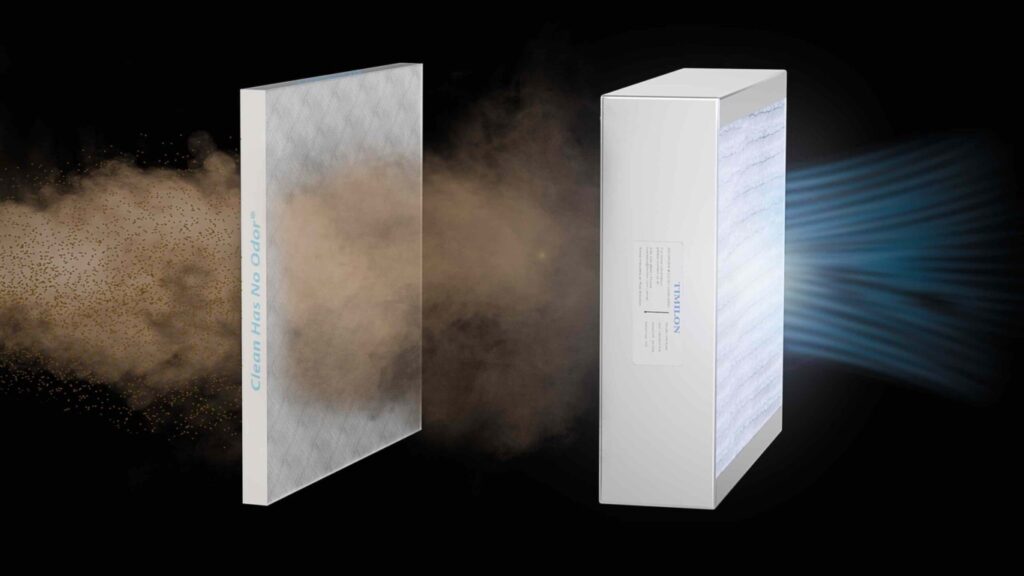
The use of HEPA filters for airborne microbe mitigation has long been applied, even in the most heightened environments such as microbiology labs. According to the journal named Survival of Microorganisms on HEPA Filters the use of HEPA filters in these labs heating, ventilation, and air conditioning (HVAC) systems is a critical component for the containment of these airborne pathogens. The HEPA filter is specifically used in these settings to help remove a range of microorganisms from the air and to prevent their release into uncontrolled areas, where individuals will be unprotected from these airborne pathogens. Ultimately, the job of the HEPA filter will be to control the number of particles entering a clean are by filtration, while most importantly having the capability to capture those pollutants that are defined as fine particulate matter like microbes that travel in the air space.
When these filters are integrated within an air purification device, it will allow for a rapid blower to quickly pull in air allowing for the filter to be exposed to large volumes of air in the environment. As air interacts and is pulled through the HEPA filtration, the airborne pollutants such as microbes that are aerosolized into the air of this space, that are within the specific micron size requirements of the HEPA filter (0.3 microns or larger) will be captured and contained on the HEPA material. Thus, the combination of HEPA filtration inside of an air purifier will allow for a more effective retainment of these airborne microbes compared to other filtration combinations.
Types of Microorganisms in the Air
Did you know that each and every day people are exposed to millions of bioaerosols that can have both beneficial and detrimental effects? According to the Microbiome journal Sources of Airborne Microorganisms in the Built Environment the various sources of airborne microorganisms in a home are broken down into eight major categories; humans, pets, plants, plumbing systems, HVAC systems, mold, dust resuspension, and the outdoor environment. The three types of microorganisms in the air of an indoor environment that can be produced from these listed sources includes; bacteria, viruses, and fungi.
- Fungi: Fungi is a classified microorganism that typically enters into a home through outdoor air intakes from the HVAC system, doors and window, and contaminants produced from building materials. One of the main fungi sources in a home comes from mildew/mold. These funguses will develop in a home or indoor space that has the desirable conditions present in the space for the mold to rapidly grow. As the mold starts to grow and spread in the environment it will release spores into the air that act as reproductive seeds, and these spores as well as other toxic substances that are released from the mold is what is labeled as airborne fungi.
- Bacteria: Bacteria are microscopic, single celled organisms that thrive in diverse environments, according to Live Science. This airborne microbe can move directly from person to person through respiration, ingestion, and dermal contact or indirectly. Bacteria will become aerosolized as a person coughs, sneezes, talks, or releases any bodily fluids from their body. Additionally, bacteria that is found in the soil will produce endotoxins, and these can be virtually everywhere outdoors which will allow for them to intrude in the home and impact the indoor air space of these environments.
- Viruses: Airborne viruses are a threatening pollutant that is capable of becoming suspended in the air as a person that is infected coughs or sneezes in the indoor space. Similar to bacteria, these viruses can become inhaled by unsuspecting individuals that will result in an infection. These airborne viruses can be hard to control, according to Very Well Health, and these microscopic pathogens will spread wide and far in the environment. The various airborne viruses in an indoor space can include influenza, rhinoviruses, measles, mumps, meningitis, etc.
Size of Viruses in Microns
When measuring airborne pollutants in an indoor space, the basic form of measurement used is microns, a metric unit of measure. Generally, the human eye can see particles as large as 40 microns in size such as a strand of human hair. However, when you are talking about small airborne pollutants such as microorganisms like bacteria and viruses, these small pollutants will be very fine in the air. As airborne pollutants float in the air that are small like bacteria and viruses, the potential for inhalation and ingestion to occur for those individuals that are exposed to these microbes will be high and hazardous to their health.
According to Engineering Toolbox, airborne bacteria ranges in size from 0.3 to 60 microns, which can be very small in the air. Additionally, viruses in particular, as there are many different viruses that can be present in the air, will range in size from 0.005 to 0.3 microns in size – which can be very difficult to mitigate from the air.
Do HEPA Filters Work to Capture Viruses?
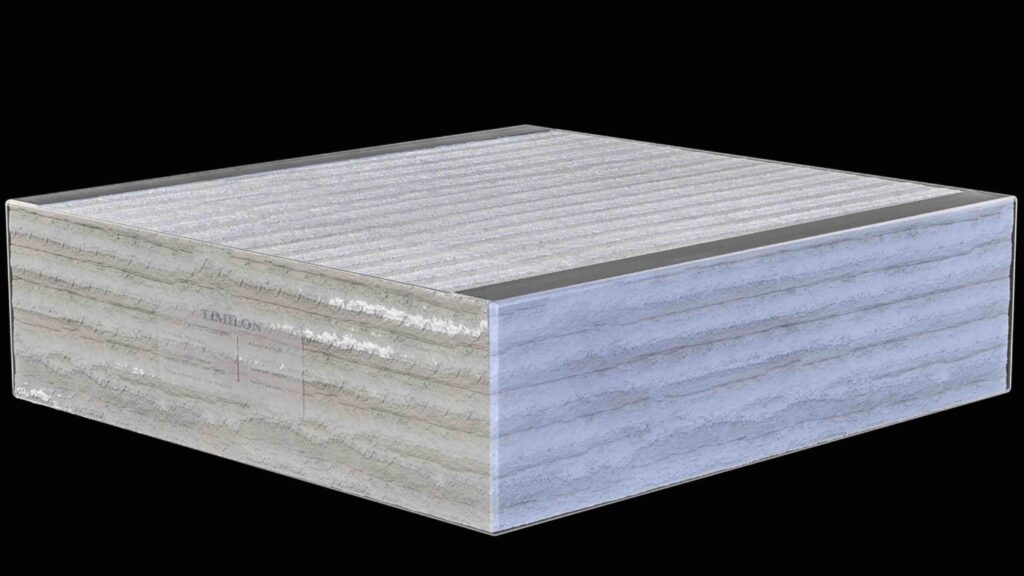
There are several benefits when it comes to using an air purifier that contains the dual capability of HEPA filtration and UV light exposure to respectively capture and destroy collected microorganisms (viruses, bacteria, and mold spores) that the high surface area of the HEPA filter accumulates within an air purifier. When it comes to collecting the small particulate matter of these airborne microorganisms in the air such as viruses, a hospital-grade HEPA filter will be one of the most effective types of filters that can be used in an air purifier to capture those smaller particulate matter that are larger than 0.3 microns in size – therefore allowing the filter to capture those microorganisms in your indoor air.
Similar to the EnviroKlenz UV Air Purifier that is a UV light air purifier, those air purification devices that use both a HEPA filter and UV lights will provide many benefits that will include the ability for the UVC lights to be positioned directly above the HEPA filter media to shine effectively on the collection site of the microorganisms on the HEPA filter to provide a high efficiency of destruction of these airborne pathogens in the air that can potentially compromise the health of the occupants in this space. Therefore, the combination of these two filtration methods inside of an air purifier can be a game changer not only for your indoor air quality but also for the health of all those exposed in this indoor space.
HEPA UV Air Purifier
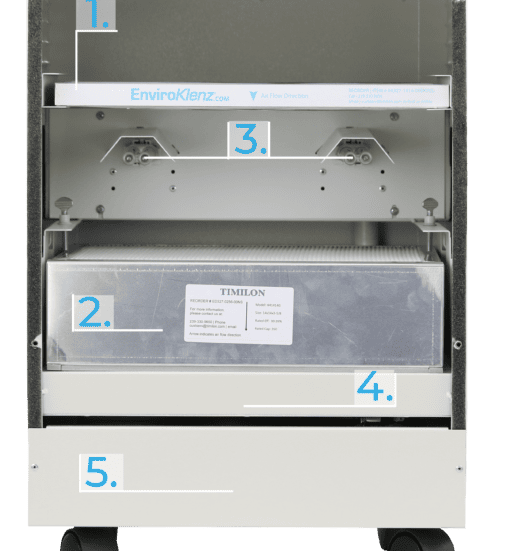
An air purifier uses UV-C light as their technology can help to expose microbes in the air to the ultraviolet light, this will kill or inactivate germs and bacteria that come into contact with the light source. The UV-C light when used in conjunction with other technologies such as a HEPA filter will help to capture the microorganism (bacteria, germs, and mold spores) and allow for long exposure times to the germicidal UV-C light. The EnviroKlenz UV Air Purifier uses both a UV-C lights and a HEPA filter to provide this type of removal of airborne bacteria and germs in the air of your indoor environment.
A HEPA Filter is a certified filter that is able to trap 99.97 percent of particles 0.3 micrometers in size, so this filter can reduce the number of small particles that carry bacteria and viruses in the air. However, not all viruses and bacteria will be removed in the HEPA filter as some of the particles are smaller than what can be captured by the filter. Also, there is a potential for these germs and bacteria to grow and cultivate on the filter if there is not a control mechanism such as UV-C.
Combating and fighting off allergens is possible particularly with different preventative measures that can be taken. Considering the different factors that can contribute to the development of germs and bacteria such as the indoor air quality, will help you have a better chance at fighting off these airborne illnesses in your personal indoor air.
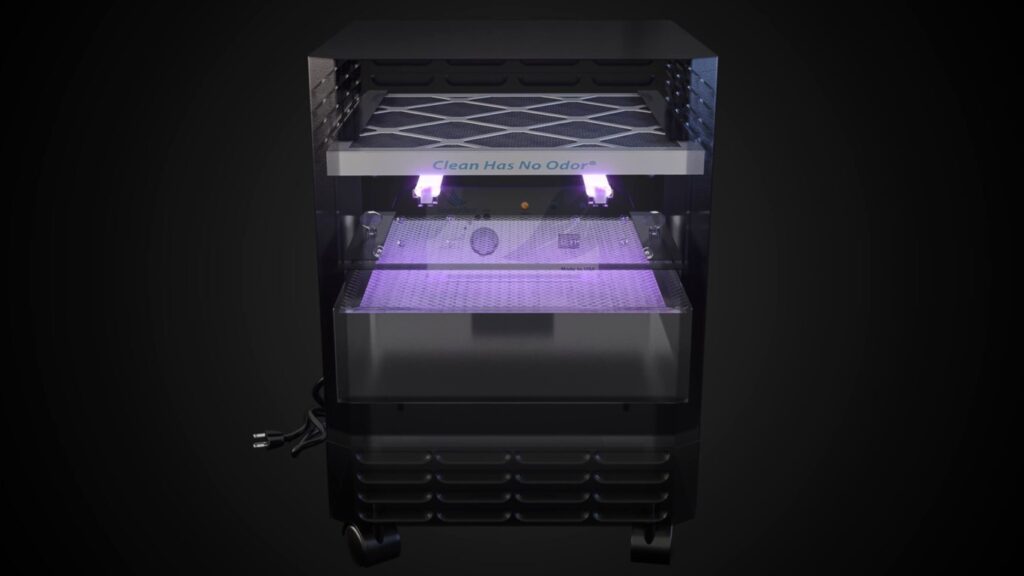
Article Sources:
- United States Environmental Protection Agency (EPA): Guide to Air Cleaners in the Home (link)
- Health Protection Agency: Survival of Microorganisms on HEPA Filters (link)
- Microbiome: Sources of Airborne Microorganisms in the Built Environment (link)
- LiveScience: What are Bacteria? (link)
- Very Well Health: An Overview of Airborne Viruses (link)
- The Engineering Toolbox: Size of Particles as Dust, Pollen Bacteria, Virus, and Many More (link)
EnviroKlenz® Medical Disclaimer:
“Any information that is provided on this website is not for the use by any commercial or personal entity without expressed written consent of the blog author. The material and statements illustrated within this blog are not intended to diagnose, treat, cure, or prevent any diseases or medical conditions. Nor does the author in any way guarantee or validate the validity, totality, or efficacy of any claims and will therefore not be held responsible for the content of any claims. Always consult your medical physician for any specific medical advice or recommendations.”









